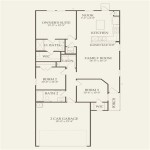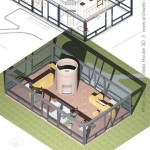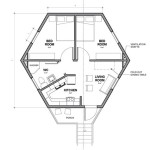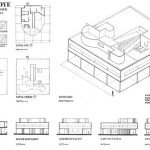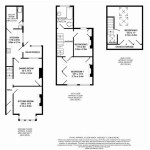Mastering the Art of 2D Floor Plans: A Comprehensive Guide to Google SketchUp
Google SketchUp, a versatile 3D modeling software, has become an invaluable tool for architects, engineers, and interior designers. Its intuitive interface and powerful features make it an ideal platform for creating professional-grade 2D floor plans. In this comprehensive guide, discover the essential steps and best practices to produce accurate and detailed 2D floor plans using Google SketchUp.
Step 1: Establish Units and Dimensions
Before embarking on your 2D floor plan, it's crucial to set up the correct units and dimensions. Google SketchUp allows you to choose from a variety of units, including inches, feet, meters, and centimeters. Ensure that the units align with the project's requirements and that the dimensions accurately represent the actual space.
Step 2: Create the Base Geometry
The foundation of your floor plan lies in its base geometry. Start by drawing the perimeter of the room using the line tool. Then, divide the space into smaller sections or rooms as needed using the rectangle tool. Remember to maintain the correct dimensions and proportions to ensure accuracy.
Step 3: Add Walls and Doors
With the base geometry in place, it's time to add walls and doors. Use the push/pull tool to extrude the geometry to create walls. Adjust the thickness of the walls to match the actual dimensions. For doors, use the rectangle tool to draw the door opening and then push/pull to create the door.
Step 4: Include Windows and Openings
Windows and other openings play a vital role in floor plans. To add windows, use the rectangle tool to create the window opening in the wall. Then, push/pull it outwards to create the window frame. You can group the window frame and opening together to easily move and edit them.
Step 5: Layer Up
Google SketchUp allows you to organize your floor plan into layers, which is particularly useful for complex projects. Create separate layers for walls, doors, windows, and furniture to enable easy editing and modification. This organization helps maintain clarity and efficiency in your workflow.
Step 6: Add Furniture and Fixtures
Once the structural elements are in place, it's time to add furniture and fixtures. Use the 3D Warehouse, an online library of pre-built models, or import your own models to populate your floor plan with furniture, appliances, and other elements. Positioning and scaling these objects accurately will enhance the realism and functionality of your floor plan.
Step 7: Add Dimensions and Annotations
Adding dimensions and annotations to your floor plan provides valuable information for builders, contractors, and anyone reading the plan. Use the dimension tool to measure and display distances between walls, doors, and windows. Annotations can be added using the text tool to clarify specific details or notes.
Step 8: Export and Share
Finally, once your 2D floor plan is complete, you can export it in various file formats such as DWG, DXF, PNG, or PDF. These files can be easily shared with clients, contractors, or other stakeholders for review, collaboration, or construction purposes.
Conclusion
Creating 2D floor plans in Google SketchUp is a skill that empowers designers with the ability to visualize and document their architectural concepts effectively. By following the steps outlined in this guide, you can produce accurate and detailed floor plans that will serve as an essential tool throughout your design process. Embrace the versatility of Google SketchUp and unlock your potential in architectural documentation.

Plan View 2d Sketchup For Web Community

Sketchup Floor Plan Tutorial For Beginners 2

Plan View 2d Sketchup For Web Community

Expert Tips On How To Create A Professional Floor Plan Sketchup Hub

Google Sketchup 2d Floor Plan Colaboratory

Sketchup Drawing 2d Kitchen Plans

Creating A Sketchup Model From Cadstd Drawing

Creating Floorplans Can This Not Be Done More Organically In Sketchup Pro Community

Sketchup Tutorial How To Create A Floor Plan In

Sketchup 101 Architecturecourses Org

